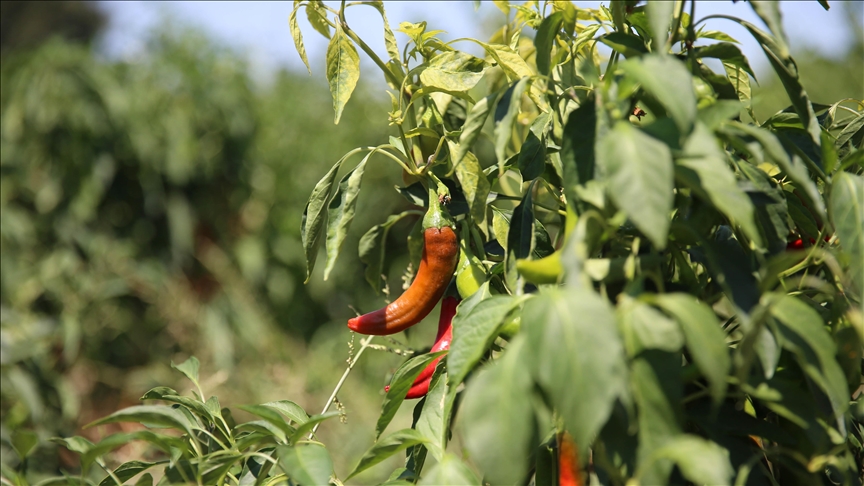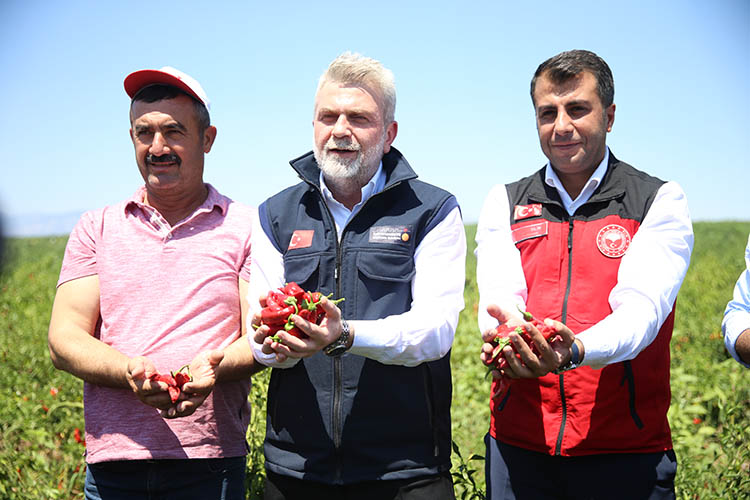Maraş pepper, known for its unique aroma, color, and pungency, is a type of red pepper produced and dried using traditional methods. It is registered as a geographical indication under the designation "Name of Origin" by the Türk Patent ve Marka Kurumu (Turkish Patent and Trademark Office).

Maraş Pepper on the Branch (AA)
Product Description and Distinguishing Features
- Maraş pepper is a plant belonging to the capsicum annuum species.
- Appearance: Its fruits are typically conical in shape, thin-fleshed, and suitable for drying. The fruit surface is smooth and even. Ripe fruits are bright red.
- Taste and Aroma: It has a unique pungency and aroma. The degree of pungency may vary according to the region it is grown in and the processing methods.
- Uses: It is used in the production of powder, chili flakes, and isot pepper flakes.
- Nutritional Value: It contains vitamins A, B, and C, as well as organic and inorganic minerals.
- Distinguishing Features: Its thin skin, retention of its unique color and aroma when dried, and ease of processing are among its most important distinguishing features. When dried, it loses approximately 75-80% of its fresh weight.

Maraş Pepper Harvest (AA)
Production Method
- Soil and Climate Requirements: It prefers light soils with good water retention capacity. It does not tolerate salty soils. The climatic conditions of the region play an important role in the quality of Maraş pepper.
- Sowing and Cultivation: It is cultivated from seed or seedlings using traditional methods. Soil preparation, sowing/planting, irrigation (drip irrigation is generally preferred), and fertilization are carried out.
- Harvest: Ripe red fruits begin to be harvested by hand starting from August. Depending on seasonal conditions, 2 or 3 harvests can be made.
- Drying: Harvested peppers are traditionally dried by spreading them in the sun or using modern oven-drying methods. Before drying, their stems are removed, and they are sometimes washed. Sun drying can take 5-12 days.
- Processing: Dried peppers are processed in various mills or machines according to their intended use (flakes or powder). For chili flakes, they are usually chopped to a specific size.
- Final Processing: To the processed pepper, salt may be added to prevent spoilage, and a small amount of vegetable oil (usually olive oil or cottonseed oil) may be added for shine.
- Quality Control: Attention is paid to quality at every stage of its production. Drying and storage conditions are important to prevent the formation of harmful substances like aflatoxin.


